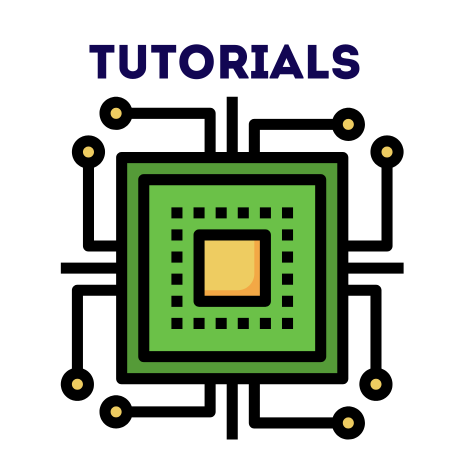The NOT gate is one of the simplest and most fundamental logic gates in digital electronics. It performs the logical negation operation, also known as inversion.
This tutorial explains the working principle, truth table, symbol, and applications of the NOT gate.
What is a NOT Gate?
A NOT gate (also called an inverter) is a digital logic gate that has:
- One input and one output.
- It outputs the inverse (complement) of the input.
- If the input is 1 (HIGH), the output is 0 (LOW).
- If the input is 0 (LOW), the output is 1 (HIGH).
This behavior makes it an essential building block in digital logic circuits.
NOT Gate Symbol
The NOT gate is represented by a triangle with a small circle (inversion bubble) at its output. The small circle indicates the inversion operation.
Truth Table of a NOT Gate
The truth table for a NOT gate is straightforward because it has only one input and one output. The output is the logical negation of the input.
| Input A | Output Y |
|---|---|
| 0 | 1 |
| 1 | 0 |
This simple operation makes the NOT gate an essential component in digital circuits.
Logical Expression of a NOT Gate
The logical operation of a NOT gate is represented as:
Y=$latex]Y = \overline{A}$
Where:
- A: Input
- Y: Output
- [latex]Y = \overline{A}[/latex]: The negation or complement of A
Working of a NOT Gate
- The NOT gate takes a single input.
- It produces an output that is the complement of the input:
- Input 1 results in output 0.
- Input 0 results in output 1.
Implementation of a NOT Gate
The NOT gate can be implemented using:
- Transistors:
- In a basic transistor circuit, a NOT gate can be created by connecting the transistor to a power source and a resistor. The input signal controls whether the transistor allows current to flow, thus toggling the output state.
- Logic Gate ICs:
- NOT gates are available in IC form, such as the 7404 IC, which contains six independent NOT gates.
NOT Gate Using IC 7404
The 7404 IC is a Hex Inverter IC, meaning it contains 6 NOT gates.
Pin Configuration of IC 7404
| Pin Number | Function |
|---|---|
| 1, 3, 5, 9, 11, 13 | Inputs (A1 to A6) |
| 2, 4, 6, 8, 10, 12 | Outputs (Y1 to Y6) |
| 7 | GND (Ground) |
| 14 | VCC (+5V) |
Applications of NOT Gate
- Signal Inversion:
- Used to invert signals in digital circuits.
- Complementation:
- Used to calculate the complement of a binary number in arithmetic operations.
- Waveform Generation:
- Inverters can create complementary waveforms for timing circuits.
- Building Other Gates:
- NOT gates are used in combination with other gates to build more complex logic circuits.
- Pulse Shaping:
- Used to shape or sharpen signals in digital communication.
- Oscillators:
- NOT gates are part of oscillator circuits, such as ring oscillators.
Practical Example: Light Control System
In a basic light control system:
- When the switch is OFF (input 0), the NOT gate turns the light ON (output 1).
- When the switch is ON (input 1), the NOT gate turns the light OFF (output 0).
This behavior is often used in automatic control systems.
Advantages of NOT Gate
- Simplicity:
- Easy to understand and implement.
- Essential Building Block:
- Forms the basis for constructing more complex logic circuits.
- Fast Switching:
- Operates at high speeds, making it suitable for high-frequency applications.
Conclusion
The NOT gate is a crucial component in digital electronics, providing the basic functionality of inversion. Its simplicity and versatility make it a fundamental building block in digital logic circuits.
By understanding the NOT gate’s operation, truth table, and applications, you can design and analyze more complex digital systems.
This tutorial provides a clear understanding of the NOT gate, making it an essential guide for beginners in digital electronics.


